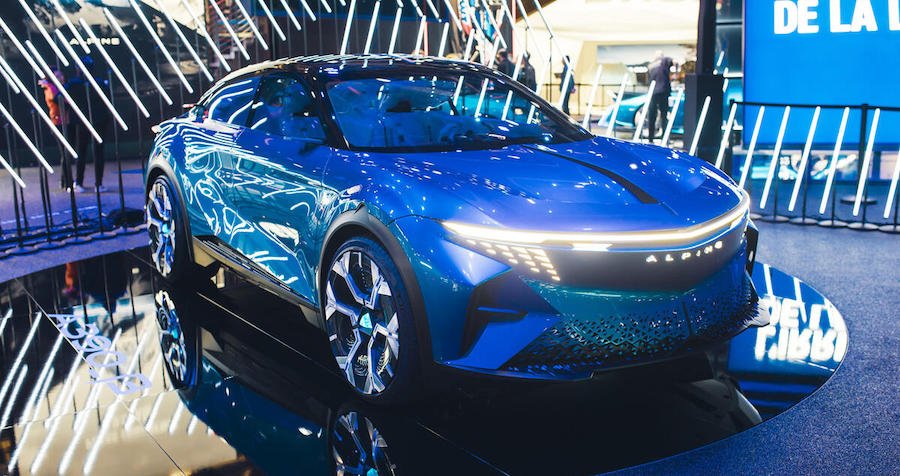Alpine's tri-motor tech to create 'perceived lightness' in heavy EVs

Alpine will use innovative power management software in its electric cars to ensure that a feeling of "perceived lightness" counteracts the added bulk of an EV powertrain and enables true sports car handling.
The firm's sole current model, the 1100kg A110, is one of the lightest cars in series production - a key component in its acclaimed dynamic agility. But the seven electric cars the brand plans to launch by 2030 will inevitably be much heavier, which presents a tricky engineering challenge for a brand whose handling prowess is central to its positioning.
For reference, even the compact electric A290 hot hatch weighs around 1500kg, and while the firm has not confirmed a weight for its new A390 SUV, the similarly sized Nissan Ariya with which it shares a platform weighs between 2000kg and 2300kg.
But speaking to journalists at the Paris motor show, Alpine CEO Philippe Krief said the firm will fine-tune its EV powertrains to give the "behaviour" of a light car, in keeping with the spirit of the A110.
"It's perceived lightness that's coming, not actual lightness," he said.
Crucial to achieving this is Alpine's bespoke powertrain arrangement – previewed on the A390 Beta concept at Paris – with two motors on the front axle and one at the rear.
By using torque vectoring technology to intricately vary the power delivery to all three motors, said Krief, "you can generate a quite immediate response time - it's like the behaviour of a light car".
The A390, he acknowledged, is "not a light car, but it seems to be. It's so quick; it's so natural and so integrated.
"When you have professional drivers testing your cars and they tested with the systems on because they wanted it that way, you understand that it's good. This is the ultimate test."
Even so, Alpine is still "working on the absolute weight of the car", he said, and it is expected to be lighter than the equivalent Renault and Nissan models.
The A390 is currently in the final stages of testing ahead of an official unveiling in six months time and will set the tone for the dynamic behaviour of the five other EVs that are due to follow it by the end of the decade.
Before being installed as Alpine CEO last year, Krief was best known for his work as an engineer on such acclaimed sports cars as the Ferrari 458 and Alfa Romeo Giulia Quadrifoglio.
Asked if his experience on those cars can help in the creation of a five-seat electric SUV, he said: "Yes, it's different, but what gives you the pleasure when you drive the car is always the same thing. It's a fact that when you do a sports car, you need to have the car feedback to everything you are doing as quickly and as reliably as possible - as simple as that.
"The steering, acceleration, braking and gearbox need to be fast and precise, and you have other technologies to do that with electric but you have some degree of freedom as well."
Describing Alpine as a "sports specialty" brand, rather than a pure sports car maker, Krief reiterated the brand's plan to be selling 100,000 cars a year by 2030, and his ambition to position the brand "kind of between Porsche and Audi".
Asked if Alpine has comparable brand awareness to those two German marques, he said "no, absolutely not", but that expanding the model line-up, Alpine's dealer network and its motorsport activities will help to build that footprint.
Related News
